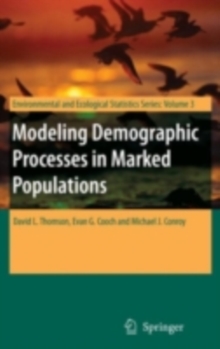
Pattern-Based Compression of Multi-Band Image Data for Landscape Analysis PDF
by Wayne L. Myers, Ganapati P. Patil
Part of the Environmental and Ecological Statistics series
Description
We offer here a non-conventional approach to muhivariate ima- structured data for which the basis is well tested but the analytical ramifi- cations are still unfolding.
Although we do not formally pursue them, there are several parallels with the nature of neural networks.
We employ a systematic set of statistical heuristics for modeling multivariate image data in a quasi-perceptual manner.
When the human eye perceives a scene, the elements of the scene are segregated heuristically into compo- nents according to similarity and dissimilarity, and then the relationships among the components are interpreted.
Similarly, we segregate or seg- ment the scene into hierarchically organized components that are subject to subsequent statistical analysis in many modes for interpretive purposes.
We refer to the segregated scene segments as patterns, since they provide a basis for perception of pattern.
Since they are also hierarchically organ- ized, we refer to them further as polypatterns.
This leads us to our acro- nym of Progressively Segmented Image Modeling As Poly-Patterns (PSIMAPP).
Likewise, we formalize our approach in terms of pattern processes and segmentation sequences.
In alignment with the terminology of image analysis, we refer to our multivariate measures as being signal bands.
Information
-
Download - Immediately Available
- Format:PDF
- Publisher:Springer US
- Publication Date:18/12/2006
- Category:
- ISBN:9780387444390
Other Formats
- Hardback from £112.49
- Paperback / softback from £112.49
Information
-
Download - Immediately Available
- Format:PDF
- Publisher:Springer US
- Publication Date:18/12/2006
- Category:
- ISBN:9780387444390










